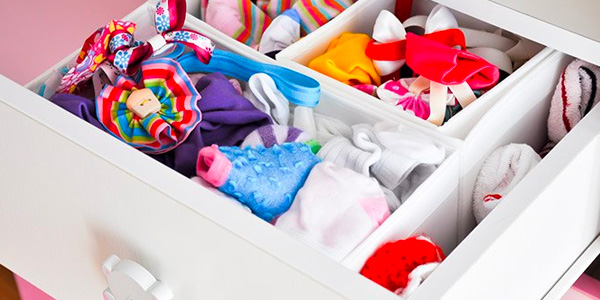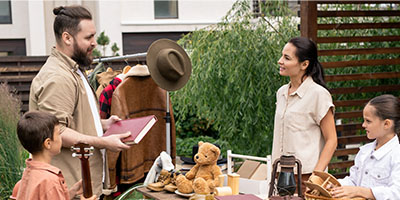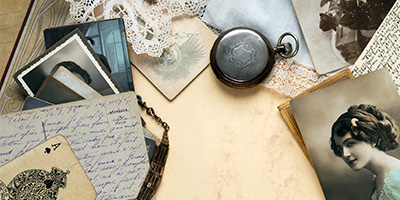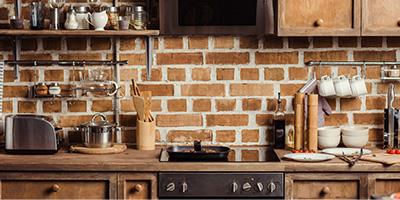Getting Your House Ready for Your Baby

How to Organize Before a New Baby
When you’re expecting, it’s easy to feel overwhelmed by all the things you need to do to prepare for your new baby. From dozens of doctor appointments to birthing plans, lifestyle adjustments and more, you may not even know where to start.
We’ve consulted with organization experts to share all you need to know to tackle the most important home projects before your baby comes. Read on to learn practical tips for getting organized, setting up a nursery and getting your entire home ready for your new baby.
What to Do Before Your Baby Comes: 6 Major Pregnancy & Nesting To-Do’s
Most women have natural nesting instincts that kick in during their pregnancies. This is when you feel the most compelled to organize and clean your house before your baby is born. But it’s best to start these home projects earlier, since your nesting instincts only become the strongest during your third trimester.

“As far as decluttering goes, I would recommend going through your house and weeding out whatever you don’t need during the first or second trimester of your pregnancy. You’ll have more energy than you will during the third trimester.”
Jenny Silverstone, Mom Loves Best
1. Decide on a Room for the Nursery
The first item on your pregnancy and nesting to-do list is to determine where to set up your baby’s nursery. If you have more than one room in your home you could use for a nursery, consider the items you’ll be placing in it and how much space they will take up. The room’s proximity to yours is also important to keep in mind – especially if your little one has trouble sleeping through the night.
Set Up Space for the Baby in Your Bedroom
If you don’t have a spare room to use as a nursery, you’ll likely set up the nursery in your master bedroom. When you rearrange your bedroom to make space for your new baby, make sure to follow safety best practices and keep your baby’s crib away from windows, electrical cords and any heavy shelving units or wall décor. Also keep in mind how much space your baby’s furniture will take up.
Even if you have a dedicated nursery room, you should still make space for the baby’s crib, cradle or bassinet in your room. The American Academy of Pediatrics advises that babies share a bedroom with parents, but not on the same sleeping area, for at least the first six months for safety reasons.
2. Clear Out the Room(s) and Clean
Cleaning out the area where the nursery will be may seem like an overwhelming task at first, but if you follow some of our easy decluttering tips, it can be easier than you’d think.
First, make a quick timeline for when you’ll clean out the room for your baby’s nursery. We recommend tackling this as early as you can in your pregnancy. Give yourself a day to day and a half to complete this project.
Use the Three-Box Method
As you start cleaning out your items while working through your nesting to-do list, you may want to consider using a simple sorting system known as “The Three-Box Method.”
Start with three storage bins or boxes, or set aside a larger area if you’re getting rid of bigger items, like furniture. Label the bins, boxes or areas as “Keep,” “Get Rid Of” and “Put in Storage” with a marker and masking tape, then organize your things per category.
After you clear out your items, take the opportunity to thoroughly clean each room. We recommend using gentle, natural cleaning products because the harsh chemicals in many household cleaners can be harmful to your baby.
3. Set Up Your Nursery Room
Now, it’s time for the fun part – setting up the nursery for your baby.
Purchase Furniture and Storage Solutions to Organize Your Baby’s Room
While you probably have your own list of items in mind for furniture, here are a few must-haves to buy for your baby’s nursery:
- Cradle, crib, bassinet, or Pack ’n Play
- Dresser or clothing bins
- Rocking chair or glider
- Toy bins
- Lighting
- Diaper changing table
- Laundry hamper
Budget-Friendly Tip for Buying Baby Furniture
When you’re adding up the costs of the furniture you need to buy for your baby, the final numbers may worry you at first. Thankfully, Silverstone offers advice for buying budget-friendly baby furniture.
“When purchasing furniture, especially if you are on a budget, I would recommend considering a 3-in-1 crib that can be converted to a toddler’s bed, and, later, a daybed,” Silverstone suggests. Buying a three-in-one crib gives you bedding options for your child beyond the first year. Not only will you save money initially, but you also will have bedding for your baby when they become a toddler.
Storage Solution Essentials
As the next step to get your home ready for your new baby, purchase storage solutions or repurpose storage that you already have in the home.
Bins, Baskets and Containers
You can use bins, baskets or other types of containers as storage for baby clothes, toys and more. Chaos to Order’s Monica Friel advises expectant mothers to repurpose what you already have first before purchasing new solutions.
If you do have to buy new storage solutions, Friel recommends choosing clear, basic and sturdy units that can stand the test of time. It will be easy to locate items in a pinch, and you’ll be able to reuse these storage solutions later.
Shelves
Consider purchasing shelving units and installing them at different heights on the wall above your changing area. They can easily help you organize toys and supplies out of the reach of your baby.

“Take advantage of vertical space on your wall, especially when your baby is small and can’t reach the space above where they’re lying when you change them. Use small shelves to store your cream, lotion or powder so they’re easily accessible.”
Jenny Silverstone, Mom Loves Best
4. Organize the Baby’s Room
When you’re setting up the nursery for your baby, you should keep safety as the main focus for the room’s setup. Follow these two safety tips:
- Place your changing table near your baby’s sleeping area.
- Keep toys away from the baby’s sleeping area, since they can be choking hazards.
Organization is key, too, since your baby’s things can easily pile up. To keep the chaos at bay, follow these simple guidelines to keep your nursery organized.
Keep Three Containers in the Closet
Having three labeled containers for keepsakes, outgoing clothes and clothes you want to save can come in handy since your baby will outgrow clothes quickly. “Once the outgoing container gets filled, have a space in your attic or basement where you can put it if you’re having [more] kids,” Friel says. “If not, you can donate these items.”

Use Drawer Dividers
Using drawer dividers to separate clothing by type can help you keep your baby’s socks separate from their bibs, onesies and more. You can easily organize your baby’s clothing and find things when you need them. You can purchase them online or you can make your own DIY drawer dividers.
Use Hanging Storage Shelves in the Closet
Hanging storage shelves can maximize storage in a small space, and you can rearrange the shelves to fit your needs. They’re relatively affordable, and you can keep using them as your baby grows up, making them a solid investment for staying organized.
5. Make Space for the Baby in Other Rooms
Beyond your nursery and master bedroom, you will want to clean the rest of the house before your baby comes to make sure there’s enough space for your little one in other areas of your home.
Make sure you set aside room for the following:
- Living/Family Room: Playpens, bouncy chairs, toys and electronics such as DVDs or tablets
- Kitchen: Bottles, cups, plates, silverware, bibs, high chairs and food
- Closets: Strollers and diaper bags
- Bathroom: Baby tub, toys, toothbrush, comb, shampoo, conditioner, medicine and lotion
Finally, if you’re having a hard time deciding what to keep and what to get rid of in each room, Friel suggests evaluating your hobbies to see if you’ll have the time or energy to do them when your baby comes.
Imagine your life after your baby is born. Do you see yourself continuing to play tennis, go golfing, do Pilates, scrapbook, go kayaking or do other similar activities? If not, you may want to consider ditching related items, or putting them in storage. It’s easiest to do this now, before your baby comes.
6. Babyproof Your Home
The last and perhaps most important project to prepare your home for a new baby is to make sure every area in your home is safe. Follow this babyproofing checklist to get started.
Consider the Baby’s Point of View
The best way to see what could be hazardous to your baby is to see their point of view. “I always recommend getting on all fours and crawling around each room to see what your baby will be seeing,” Silverstone says. “You’ll feel silly, but it will help give you a look at the room from their perspective.” Overall, it’s an easy and foolproof way to catch safety risks you might otherwise miss.
Install Safety Locks on Cabinets
“New parents should always ensure there are safety locks on the cabinets underneath their sinks in the kitchen and bathrooms,” Silverstone shares. The last thing you want is your curious and inquisitive toddler to open cabinets and get ahold of something they shouldn’t, such as cleaning supplies, medicine and other items that can harm a baby.
Put Child-Safe Covers on Your Outlets
“Another top priority is using outlet covers to stop your curious baby from putting their fingers into the sockets,” Silverstone says. Make sure to do so in every room of your house.
Check out Silverstone’s detailed room-by-room babyproofing guide for more tips.
Guard Your Stairs with Baby Gates
If you have stairs in your home, you’ll want to buy a baby gate to prevent trips and falls. Baby gates are also useful for closing in rooms once your baby starts crawling, so he or she can’t wander away.
Anchor All Your Furniture – Especially in the Nursery
Newly crawling babies often try climbing on furniture in their nursery and the home. To prevent dressers, shelves and any other heavy furniture from tipping over, anchor them to the wall.
Install Childproof Window Guards
Curious babies may want to open windows when they hear birds chirping or see snow falling. Install childproof window guards on all your windows to protect your baby.
Looking for more ways to improve your home? Check out our DIY Home Improvement Guide!



